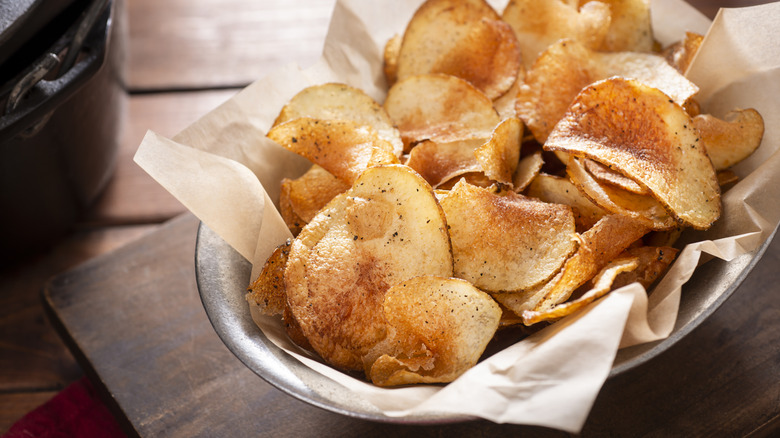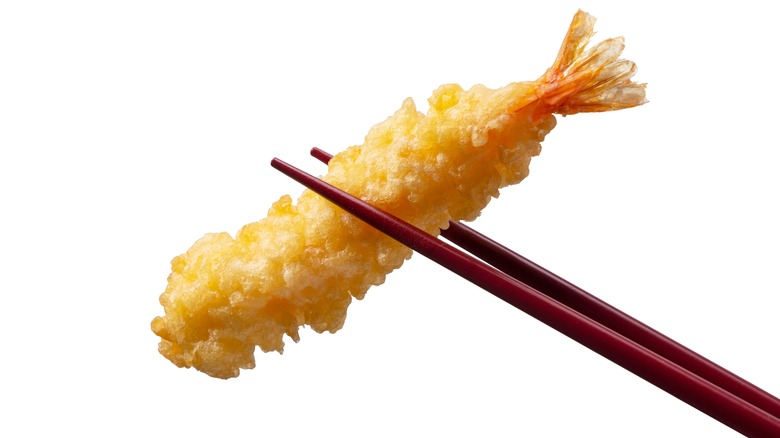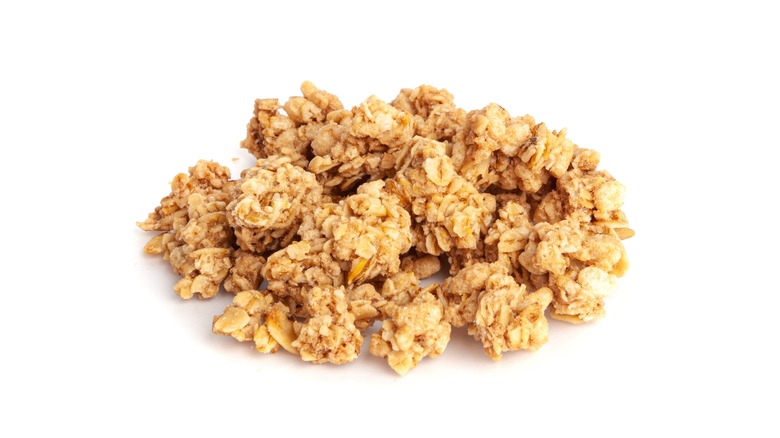The Difference Between Crispy And Crunchy, In Excruciating Detail
Crispy and crunchy are two of the most common descriptors found on menus, packaging, and food advertisements, but few take the time to contemplate exactly what they mean. Crispy and crunchy are not interchangeable, and while that might sound pedantic, distinguishing different textures is crucial to understanding what makes certain foods so appealing. A food's texture changes how we perceive its flavor, affecting how taste and aroma are released.
Crispy and crunchy are especially important to understand because they each contribute to flavor in a way you wouldn't expect: through sound. Research published in Flavour indicates that humans favor foods that crackle and crunch in our mouths. Both crispy and crunchy foods are characterized by their stiff, brittle texture and the quick bursts of noise made by every bite, but food scientists have only recently given attention to the differences between them.
A 2013 study published in The International Journal of Food Properties marked perhaps the first attempt to establish scientific definitions of crispness and crunchiness. Researchers analyzed acoustic qualities such as frequency and intensity alongside the taste, texture, and etymology of crisp and crunchy. As a result, they came up with a pair of specific definitions. The difference boils down to the thickness of foods, the force required to chew them, and the volume and frequency of the sounds they make. There are way more details to crispy and crunchy than you'd ever imagine, so let's dive right in.
The definition of crispy
The International Journal of Food Properties defines crispy as "A dry rigid food which, when bitten with the incisors, fractures quickly, easily, and totally, while emitting a relatively loud, high-pitched sound." Analysis of acoustic energy puts the sound of crispy foods at 5 kilohertz or higher, around the same as the chirping of dolphins.
In terms of appearance and texture, crispy foods are thin, lightweight, and fragile. To give a few examples, consider the flaky crust of a freshly baked croissant, which instantly shatters upon contact with your teeth, or the delicate, airy nature of tempura batter. Crispy foods do not take a lot of force or time to chew, and they break apart with such ease that they often leave a heap of little shards behind. This is something you'll see with thin chips or french fries.
Crisp is a tricky term because it has other connotations. It's often used to denote freshness in produce such as lettuce and grapes, which has led to its association with quality in general. Crispy also has connotations of temperature, as it's used to describe pleasantly cold things like crisp autumn air or a glass of crisp, refreshing lemonade.
The definition of crunchy
The International Journal of Food Properties defines crunchy as "A dense-textured food which, when chewed with the molars, undergoes a series of fractures while emitting relatively loud, low-pitched sounds." When you consider acoustic energy, the sound of crunchy foods is around 1 to 2 kilohertz, the same range as the low bellows of a blue whale.
Crunchy is like the more intense cousin of crispy; crunchy foods are thicker, harder, and louder to chew than crispy foods. They also take more force and time to chew, requiring more work from your molars. An example of crispy versus crunchy would be thin Lay's potato chips versus thick Kettle chips. Crunchy also applies to most raw vegetables, like carrots, celery, and bell peppers.
Like crispy, crunchy has taken on an alternate meaning outside the culinary world. In the 1980s, "crunchy" was a slang term for people with liberal, environmentalist, or hippie beliefs. This arose from that group's perceived affinity for granola. Given that granola is typically packed with nuts and toasted oats, it's a textbook crunchy food.


